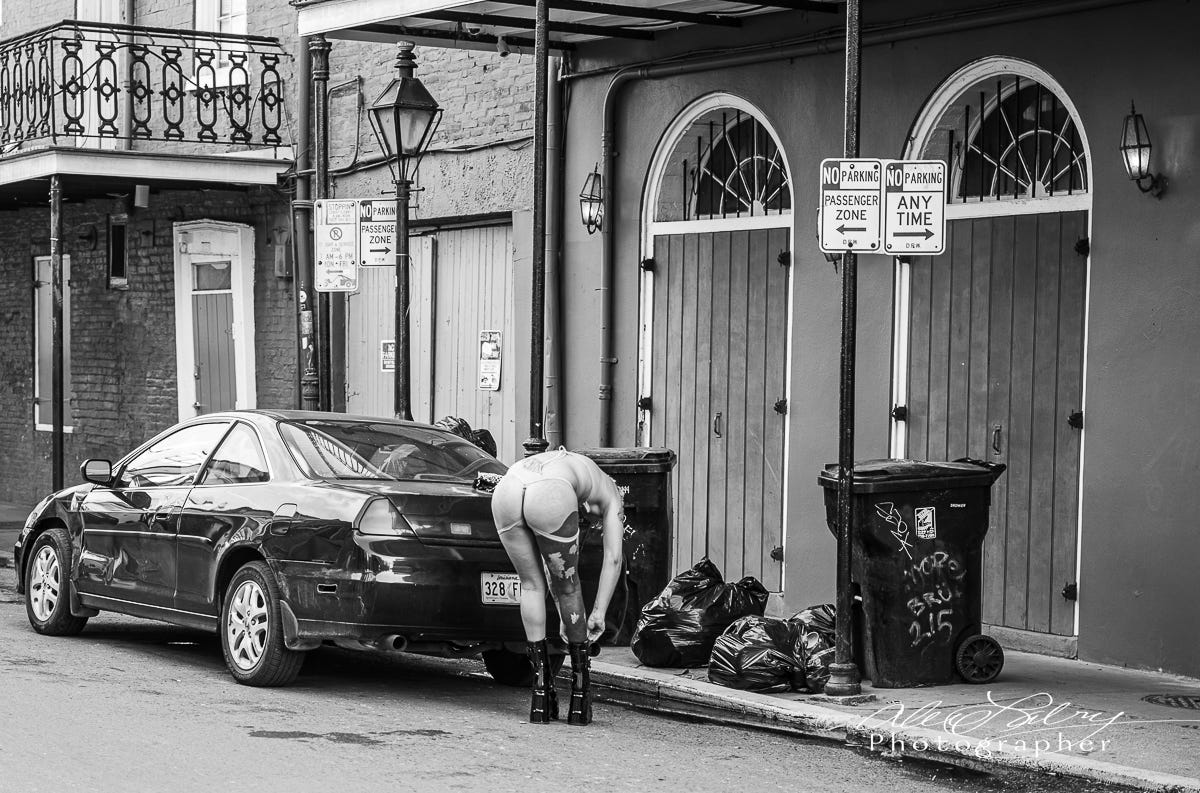The American Contract Bridge League’s national bridge tournament was held in New Orleans in March and naturally I couldn’t resist the opportunity to attend. From my place on Barracks Street in the French Quarter to the tournament was about 45-50 minute walk for me and my camera, a.k.a. - Nola. She adamantly refused to stay idle in her bag for 12 hours while I walked through the French Quarter. “What does your tag line say, duh? - ‘Some people walk their dog, I walk my camera’ — so what am I?” For normal people it would be about a 35 minute walk but with Nola around my neck — well you get the picture.
Another reason to be in New Orleans was St. Joseph’s Day Celebration. New Orleans was a prime destination for Sicilian immigration in the 19th century — in fact, by the late 1800s, the French Quarter was almost 80 percent Sicilian. One of the traditions the Sicilians carried with them was the construction of elaborate altars for the Feast of Saint Joseph, celebrated on March 19. According to legend, people prayed to St. Joseph to help them during a terrible famine that ended because of an unexpected bounty of fava beans. Always thought he was a carpenter not a bean counter.
The annual Mardi Gras Indians Super Sunday “Strut” is always held on the third Sunday in March. For many years New Orleans’ African-American residents were excluded—formally and otherwise—from participating in mainstream Mardi Gras celebrations. In response, the city’s Black community developed its own Carnival traditions, including parades where rival gangs, known as tribes, would “mask” as Native Americans, in order to pay tribute to the indigenous peoples who had helped fugitive slaves escape to freedom in Louisiana’s bayous. Each year, participants handcraft intricate, elaborate headdresses and “suits” (never referred to as costumes) that are worn two times only: first on Mardi Gras day and second on Super Sunday, after which they are retired. New Orleans’ Super Sunday celebration began in 1969, but the tradition of creating suits and “masking” is said to date back to the early 18th century. Initially, the suits were covered in fish scales or bottle caps, but since synthetic materials became available they have been made from beads and feathers. The annual “Strut” is a remarkable cultural event that celebrates the culmination of the Carnival season.
Enjoy the latest rendition of Blogart? PLEASE add a like…and/or comment. THANK YOU…




